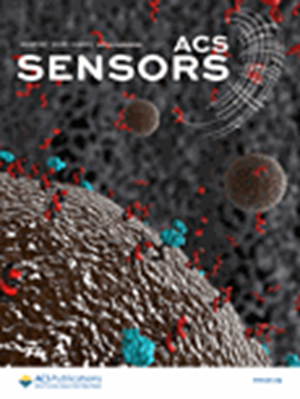Iridium-Based Time-Resolved Luminescent Sensor for Ba2+ Detection
IF 8.2
1区 化学
Q1 CHEMISTRY, ANALYTICAL
引用次数: 0
Abstract
We present a new time-resolved chemosensor for the detection of Ba2+ ions. Our sensor is based on an iridium(III) compound with dual (fluorescent and phosphorescent) emission. The nature of the luminescence response of the sensor depends on its state; specifically, the phosphorescence emission of the free state at long wavelengths is strongly suppressed, while that of the Ba2+-chelated compound is strongly enhanced. Furthermore, the residual phosphorescence emission of the free compound decays with two short decay constants, τfree1 ∼ 3.5 ns (88%) and τfree2 ∼ 209 ns (12%), while the chelated compound decays with two long decay constants, τbound1 ∼ 429 ns (21%) and τbound2 ∼ 1128 ns (76%). This exceptional behavior, supported by quantum chemical calculations, allows a time-based separation between the signals of the free and the chelated species. Among other applications, our sensor could be the basis of a Ba2+ tagging detector for neutrinoless double beta decay searches in xenon.

求助全文
约1分钟内获得全文
求助全文
来源期刊

ACS Sensors
Chemical Engineering-Bioengineering
CiteScore
14.50
自引率
3.40%
发文量
372
期刊介绍:
ACS Sensors is a peer-reviewed research journal that focuses on the dissemination of new and original knowledge in the field of sensor science, particularly those that selectively sense chemical or biological species or processes. The journal covers a broad range of topics, including but not limited to biosensors, chemical sensors, gas sensors, intracellular sensors, single molecule sensors, cell chips, and microfluidic devices. It aims to publish articles that address conceptual advances in sensing technology applicable to various types of analytes or application papers that report on the use of existing sensing concepts in new ways or for new analytes.
 求助内容:
求助内容: 应助结果提醒方式:
应助结果提醒方式:


